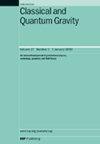双黑洞合并GW150914的AthenaK模拟
IF 3.7
3区 物理与天体物理
Q2 ASTRONOMY & ASTROPHYSICS
引用次数: 0
摘要
我们使用gpu加速代码AthenaK提出了针对GW150914的新的双黑洞模拟。我们用孤立的视界形式计算了最终残余的性质,并通过柯西特征提取得到了未来零无穷远处的重力波形。我们将我们的结果与模拟极端时空(SXS)和罗切斯特理工学院(RIT)小组针对同一事件获得的结果进行了比较。我们发现残余质量、自旋和反冲速度与SXS和RIT结果非常吻合。对于引力波信号的主导模态,我们得到了最大消相和振幅差。我们使用新计算的波形重新分析了GW150914数据,并找到了与使用半解析波形模型获得的啁啾质量、光度距离和倾角的后验。这项工作证明了AthenaK在多轨道双黑洞合并模拟中的可行性。GitHub上有一个循序渐进的教程,包括所有必要的输入文件和分析脚本来重现我们的结果。本文章由计算机程序翻译,如有差异,请以英文原文为准。
AthenaK simulations of the binary black hole merger GW150914
We present new binary black hole simulations targeted to GW150914 using the GPU-accelerated code AthenaK. We compute the properties of the final remnant with the isolated horizon formalism and obtain gravitational-waveforms at future null infinity via Cauchy characteristic extraction. We compare our results with those obtained by the Simulating eXtreme Spacetimes (SXS) and Rochester Institute of Technology (RIT) groups, targeted to the same event. We find excellent agreement with the SXS and RIT results in the remnant mass, spin, and recoil velocity. For the dominant mode of the gravitational-wave signal we find maximum dephasing of and amplitude difference of . We use our newly computed waveform to re-analyze the GW150914 data and find posteriors for chirp mass, luminosity distance, and inclination that are broadely consistent with those obtained using semi-analytic waveform models. This work demonstrates the viability of AthenaK for many-orbits binary black hole merger simulations. A step-by-step tutorial, including all necessary input files and analysis scripts to reproduce our results, is available on GitHub.
求助全文
通过发布文献求助,成功后即可免费获取论文全文。
去求助
来源期刊

Classical and Quantum Gravity
物理-天文与天体物理
CiteScore
7.00
自引率
8.60%
发文量
301
审稿时长
2-4 weeks
期刊介绍:
Classical and Quantum Gravity is an established journal for physicists, mathematicians and cosmologists in the fields of gravitation and the theory of spacetime. The journal is now the acknowledged world leader in classical relativity and all areas of quantum gravity.
 求助内容:
求助内容: 应助结果提醒方式:
应助结果提醒方式:


